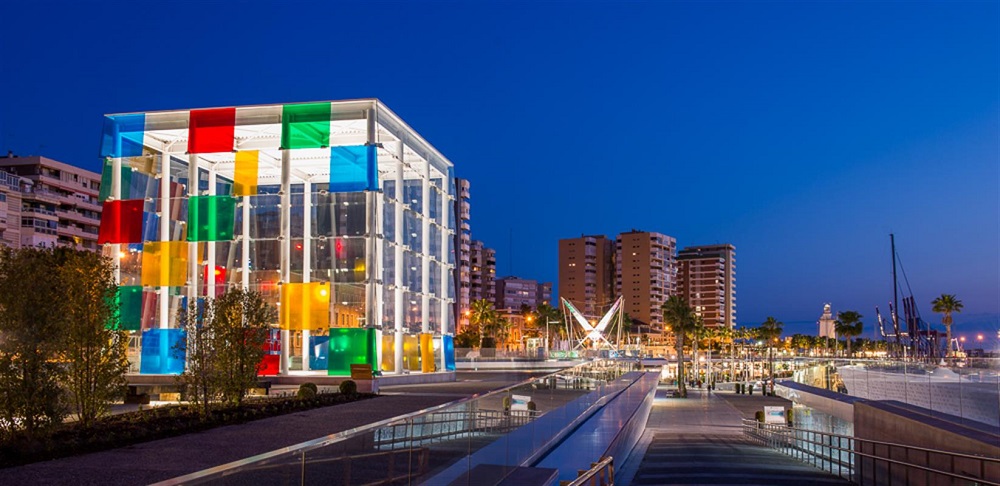In the heart of Malaga, the Centre Pompidou stands as a beacon of contemporary art, drawing in both locals and tourists with its distinctive cube-shaped structure, affectionately known as “El Cubo”. This museum, an extension of the renowned Centre Pompidou in Paris, offers a unique blend of historic charm and modern artistic flair. As we journey through its corridors, we’ll uncover the rich tapestry of art, history, and culture that it brings to the Andalusian coast.

Susana Salvatierra
Table of Contents
- A Brief History of El Cubo
- Architectural Marvel of The Centre Pompidou
- The Collections Within
- Notable Exhibits and Artists
- Engaging Programs and Workshops
- The Museum’s Impact on Malaga
- Future Prospects
- Visiting the Centre Pompidou Malaga
- Visiting the Centre Pompidou Malaga from Vamos Academy
- Location and Accessibility
- Tips for a Fulfilling Visit
A Brief History of El Cubo
The Centre Pompidou Malaga, colloquially known as “El Cubo” due to its striking cube-like structure, is a testament to the evolving art scene in Spain and the strengthening ties between France and Spain in the realm of contemporary art. The journey of El Cubo began when the city of Malaga sought to enhance its cultural offerings and position itself as a leading destination for art in southern Spain. Recognizing the potential of a partnership with one of the world’s most renowned museums, the Centre Pompidou in Paris, Malaga embarked on a mission to bring a slice of Parisian art to its shores.Inaugurated in 2015, El Cubo became the first-ever branch of the Parisian museum outside of France. This collaboration was not just about sharing art but was a symbol of the shared values and vision of both cities. The agreement ensured that the Centre Pompidou Malaga would house a rotating collection of artworks from the main museum in Paris, allowing Spanish audiences to experience world-class contemporary art without leaving their country.The building’s design, a transparent cube adorned with multicolored panels, was conceptualized by architects Javier Pérez de la Fuente and Juan Antonio Marín Malavé. Their vision was to create a space that was both inviting and innovative, blending seamlessly with Malaga’s urban landscape while also standing out as a modern architectural marvel.Over the years, El Cubo has not only showcased art but has also played a pivotal role in Malaga’s cultural renaissance. It has transformed the city’s waterfront area, Muelle Uno, into a bustling hub of art, culture, and activity, drawing both locals and tourists alike.Today, as El Cubo stands tall on the Malaga port, it serves as a reminder of the city’s commitment to art, culture, and international collaboration, and its journey from a mere concept to a cultural landmark is nothing short of inspiring.
Architectural Marvel of The Centre Pompidou
The Centre Pompidou Malaga, or “El Cubo” as it’s affectionately known, isn’t just a repository of art; its very structure is a masterpiece in its own right. This architectural gem, situated in the heart of Malaga’s port area, is a harmonious blend of functionality, innovation, and aesthetic appeal.Designed by the visionary architects Javier Pérez de la Fuente and Juan Antonio Marín Malavé, El Cubo’s transparent structure is a nod to the idea of openness and accessibility. The museum’s design invites onlookers to peer into its world even before they step inside, creating a sense of intrigue and wonder.One of the most distinctive features of El Cubo is its multicolored panels that envelop the cube. These panels, reminiscent of a vibrant mosaic, play with light and shadow, creating a dynamic visual experience that changes with the time of day and the angle of sunlight. This design choice not only adds a playful element to the structure but also symbolizes the diverse and ever-changing nature of contemporary art.The building’s strategic location near the port further amplifies its beauty. The shimmering waters of the Mediterranean Sea serve as a backdrop, making the colorful panels of El Cubo pop even more. This juxtaposition of the urban and maritime environments creates a unique ambiance, where the modernity of the museum meets the timeless charm of the sea.Inside, the museum’s layout is thoughtfully designed to enhance the visitor’s experience. High ceilings, open spaces, and ample natural light ensure that each artwork is showcased in its best light. The fluidity of the interior spaces allows for a seamless transition between exhibits, making the exploration of art a holistic journey rather than a segmented experience.In essence, the architectural brilliance of El Cubo is not just in its visual appeal but in its ability to resonate with the ethos of contemporary art. It stands as a testament to Malaga’s forward-thinking approach and its dedication to creating spaces that inspire, engage, and captivate.
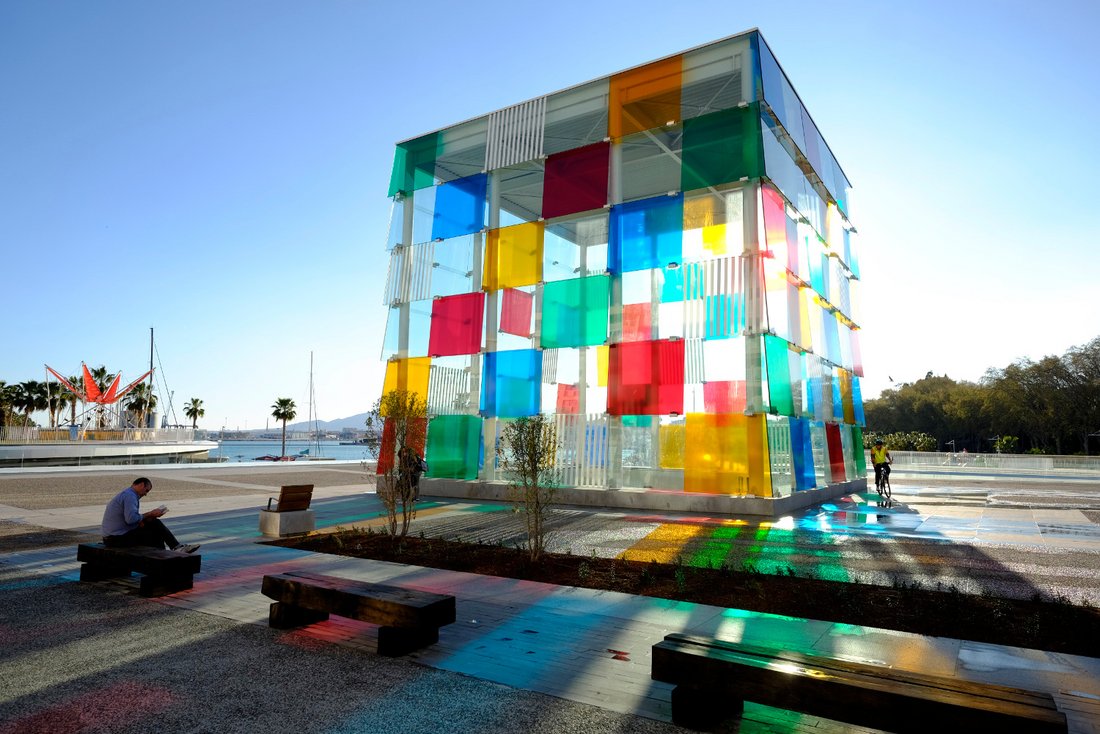
The Collections Within
The Centre Pompidou Malaga, fondly referred to as El Cubo, is not just an architectural marvel but also a treasure trove of artistic masterpieces. Housing a curated selection from the 20th and 21st centuries, the museum offers a deep dive into the world of contemporary art, showcasing a diverse range of styles, mediums, and narratives.
Modern Masters
At the heart of El Cubo’s collection are works from some of the most iconic artists of the modern era. From the surreal landscapes of Salvador Dalí to the abstract brilliance of Joan Miró, the museum offers a journey through the transformative periods of art in the 20th century. Pablo Picasso, a son of Malaga, also finds a prominent place within the museum, with select pieces that highlight his versatility and genius.
Are you a Picasso Lover? Learn more about him: The Museums of Malaga: A Journey Through Art, History, and Innovation
Contemporary Voices
Moving into the 21st century, El Cubo boasts a collection that reflects the evolving dynamics of the art world. Here, visitors can find pieces from emerging artists who challenge traditional norms, experiment with new mediums, and address contemporary issues. These artworks, whether they are installations, digital art, or mixed media, resonate with the current times, offering insights into society, politics, and the human psyche.
Thematic Exhibitions
One of the unique aspects of the Centre Pompidou Malaga’s collection is its thematic exhibitions. These are carefully curated displays that revolve around a specific theme or narrative, allowing visitors to delve deep into a particular topic or artistic movement. Themes can range from explorations of color and form to socio-political commentaries, ensuring a fresh perspective with each visit.
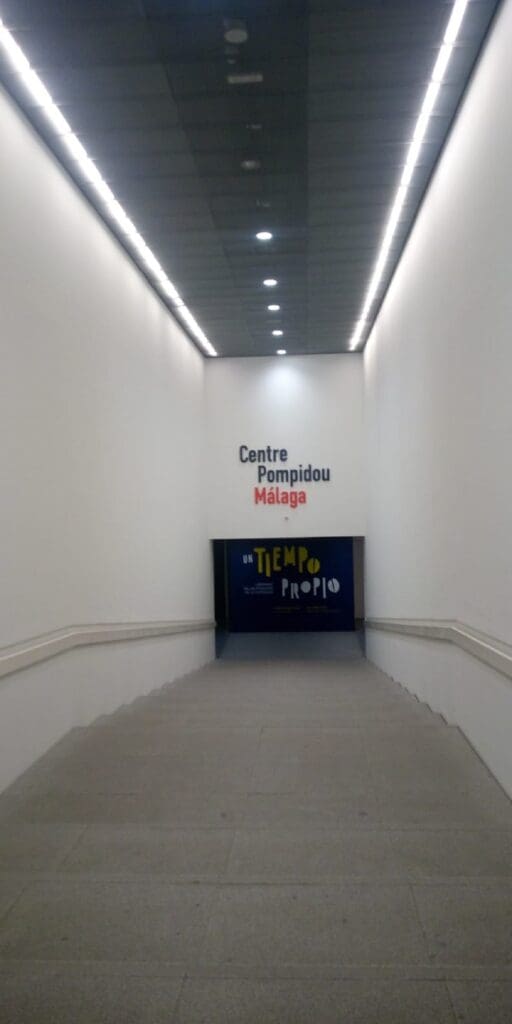
Rotating Displays
In collaboration with its Parisian counterpart, El Cubo ensures that its collection remains dynamic and ever-evolving. Every two to three years, artworks rotate, bringing in fresh pieces from the main Centre Pompidou in Paris. This rotation not only keeps the museum’s offering fresh but also ensures that visitors, whether they’re locals or tourists, have something new to look forward to with each visit.
Interactive and Multimedia Art
Understanding the changing dynamics of the art world and the increasing role of technology, El Cubo also houses a selection of interactive and multimedia artworks. These pieces, often immersive in nature, invite visitors to become a part of the art, blurring the lines between the observer and the observed.In conclusion, the collections within El Cubo are a testament to the rich tapestry of contemporary art. They offer a blend of the old and the new, the traditional and the avant-garde, ensuring that every visitor, regardless of their artistic inclination, finds something that resonates with them.
Notable Exhibits and Artists
The Centre Pompidou Malaga, or “El Cubo”, is not just a space but a narrative, telling the story of art’s evolution through its notable exhibits and celebrated artists. Each piece within its walls carries a legacy, a story, and a vision, making the museum a melting pot of artistic genius from different eras and styles.
Pablo Picasso
Being in Malaga, the birthplace of Pablo Picasso, it’s only fitting that El Cubo houses some of the maestro’s most iconic works. From his early Blue and Rose periods to his pioneering Cubist works, the museum offers a glimpse into the mind of one of the 20th century’s most influential artists. His pieces, such as “The Weeping Woman” and “Les Demoiselles d’Avignon”, are a testament to his revolutionary approach to art.
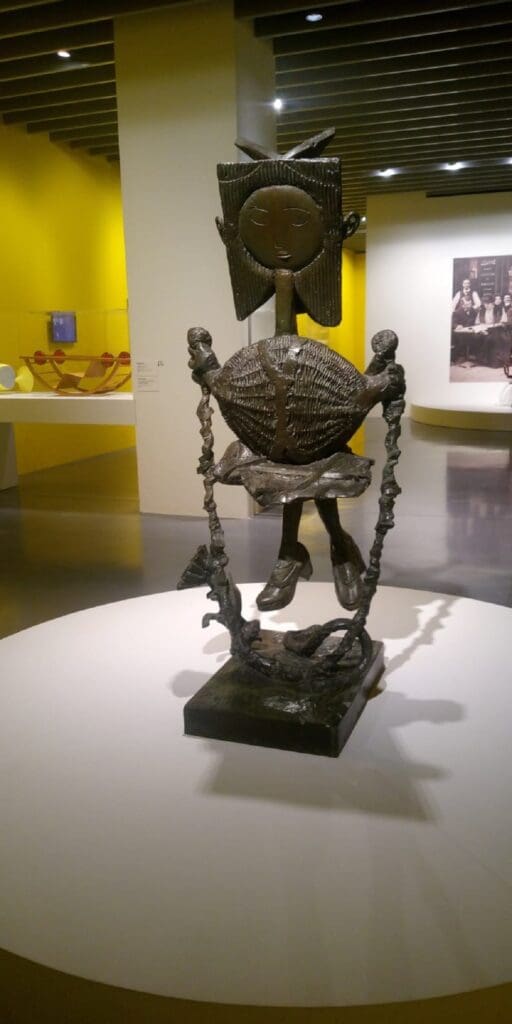
Frida Kahlo
The enigmatic Frida Kahlo finds her space within El Cubo with her deeply personal and symbolic paintings. Her works, often a reflection of her tumultuous life and her Mexican heritage, are a blend of realism and fantasy. Pieces like “The Two Fridas” and “Self-portrait with Thorn Necklace and Hummingbird” showcase her unique style and her ability to convey raw emotion through her art.
Salvador Dalí
The surreal world of Salvador Dalí comes alive in El Cubo. His dreamlike landscapes, melting clocks, and distorted figures challenge the viewer’s perception of reality. Works like “The Persistence of Memory” and “The Elephants” are a journey into the depths of the subconscious, showcasing Dalí’s unparalleled imagination.
Joan Miró
Miró’s abstract and playful art adds a splash of color and whimsy to the museum’s collection. His works, characterized by simple shapes, bright colors, and symbolic motifs, are a celebration of childlike innocence and creativity. Pieces like “The Garden” and “Blue II” are a testament to his innovative spirit and his ability to find magic in the mundane.
Contemporary Innovators
Beyond the legends, El Cubo also celebrates contemporary artists who are redefining the boundaries of art. From immersive installations to digital masterpieces, these artists bring a fresh perspective to the museum. Artists like Yayoi Kusama, with her infinity rooms, and Ai Weiwei, with his socio-political installations, challenge traditional norms and invite viewers to question, reflect, and engage.
Thematic Showcases
El Cubo often curates thematic exhibitions that revolve around a specific concept, era, or movement. These showcases offer a deep dive into topics like the Renaissance period, the Impressionist movement, or even the role of women in art. Through these thematic displays, the museum offers a holistic understanding of art’s evolution and its impact on society. In essence, the notable exhibits and artists within El Cubo are a journey through time and creativity. They celebrate the genius of the past while also embracing the innovations of the present, ensuring that art remains a living, breathing entity that evolves with the times.
Artist of the pen: Spanish Writers from Spain: The Masters of Pen and Prose
Engaging Programs and Workshops
The Centre Pompidou Malaga, affectionately known as “El Cubo”, is not just a space to view art but also a hub for active engagement, learning, and creativity. Recognizing the importance of interactive experiences in deepening one’s appreciation for art, the museum offers a plethora of programs and workshops tailored for diverse audiences.
Guided Tours
For those keen on understanding the nuances of the exhibits, the museum offers guided tours led by knowledgeable curators and art historians. These tours provide insights into the artists’ lives, their creative processes, and the stories behind each masterpiece. Special thematic tours, focusing on specific eras or movements, are also available for those looking to delve deeper into a particular subject.
Children’s Workshops
Understanding the innate creativity of children, El Cubo hosts a range of workshops designed specifically for the younger audience. From hands-on painting sessions inspired by Picasso’s works to sculpture-making classes echoing the styles of contemporary artists, these workshops aim to nurture a child’s artistic instincts and introduce them to the world of art in a fun and interactive manner.
Art Appreciation Sessions
For adults looking to enhance their understanding of art, the museum organizes art appreciation sessions. These sessions, often led by renowned art critics and historians, delve into the intricacies of various art forms, styles, and movements, fostering a deeper connection with the artworks on display.
Digital Art Workshops
In line with the evolving dynamics of the art world, El Cubo offers workshops on digital art. Participants can explore the realms of digital painting, animation, and even virtual reality art, understanding the tools and techniques that define contemporary digital creations.
Artist Talks and Panel Discussions
To bridge the gap between artists and audiences, the museum frequently hosts talks and panel discussions. These events provide a platform for artists to share their journeys, inspirations, and challenges, allowing attendees to gain a firsthand perspective on the life and mind of a creator.
Special Programs for Schools
El Cubo collaborates with schools to offer tailored programs that align with educational curriculums. These programs, ranging from interactive tours to hands-on workshops, aim to integrate art education into mainstream schooling, fostering creativity and critical thinking among students.
Seasonal Workshops
In tune with the changing seasons and festivals, the museum organizes special workshops. Whether it’s a Christmas-themed art class or a summer sculpture workshop, these seasonal programs add a festive touch to the museum’s offerings.In essence, the engaging programs and workshops at El Cubo are a testament to the museum’s commitment to making art accessible, relatable, and enjoyable. By offering avenues for active participation, the museum ensures that art is not just viewed but also experienced, felt, and lived.
The Museum’s Impact on Malaga
The Centre Pompidou Malaga, popularly known as “El Cubo”, has not only transformed the city’s skyline with its iconic structure but has also left an indelible mark on Malaga’s cultural, economic, and social landscape.
Cultural Renaissance
Before the establishment of El Cubo, Malaga was primarily known for its historical landmarks and beautiful beaches. The museum’s arrival marked a shift in this narrative, positioning Malaga as a burgeoning hub for contemporary art in Spain. It has played a pivotal role in the city’s cultural renaissance, attracting art enthusiasts, critics, and scholars from around the world. This influx of art-centric visitors has also led to the emergence of smaller galleries, art cafes, and studios, further enriching the city’s artistic milieu.
Economic Boost
The museum’s popularity has had a significant economic impact on the city. Drawing thousands of visitors annually, it has boosted tourism, leading to increased revenue for local businesses, hotels, and restaurants. The area surrounding the museum, especially the Muelle Uno port area, has seen a surge in commercial activity, with new establishments cropping up to cater to the influx of tourists.
Revitalization of the Port Area
El Cubo’s strategic location at the port has led to the revitalization of the entire waterfront area. Once a relatively quiet zone, the port is now a bustling hub of activity, with cafes, shops, and entertainment venues. The museum’s presence has transformed this space into a lively promenade, perfect for both daytime explorations and nighttime revelries.
Located at one of the best places in Malaga: Muelle Uno: Malaga Premier Seaside Shopping & Dining Destination
Educational Impact
With its diverse range of workshops, programs, and school collaborations, El Cubo has become an educational epicenter. It offers locals, especially the younger generation, an opportunity to engage with art in a hands-on manner. This has fostered a deeper appreciation for art among Malagans and has inspired many to pursue careers in the arts.
Community Engagement
Beyond its walls, the museum actively engages with the community, hosting local art fairs, community-driven exhibitions, and public art installations. This has created a sense of ownership and pride among the locals, with the museum being seen not just as an institution but as a communal space for expression and creativity.
Global Recognition
El Cubo’s presence has elevated Malaga’s status on the global stage. The city is now frequently mentioned alongside other European art capitals like Paris, London, and Berlin. This recognition has opened doors for further international collaborations, art exchanges, and cultural festivals.In conclusion, the Centre Pompidou Malaga’s impact on the city is multifaceted. It stands as a beacon of art and culture, driving economic growth, fostering education, and building community ties. Through its influence, Malaga has been reimagined, not just as a sun-soaked holiday destination but as a vibrant epicenter of contemporary art and culture.
Future Prospects
The Centre Pompidou Malaga, affectionately known as “El Cubo”, has already made significant strides in the few years since its inception. However, the vision for this iconic institution extends far beyond its current achievements. As the museum continues to evolve, several exciting prospects lie on the horizon.
Expansion of Collections
While the museum already boasts an impressive array of artworks, plans are underway to further diversify and expand the collection. Collaborations with other international museums and private collectors are being explored, ensuring that the Centre Pompidou Malaga remains at the forefront of the contemporary art scene.
Technological Integration
In line with global trends, the museum is looking to integrate more technology-driven exhibits. Augmented reality tours, virtual reality art experiences, and interactive digital installations are some of the innovations being considered. These technological integrations aim to offer visitors a more immersive and engaging experience.
Sustainable Initiatives
Recognizing the importance of sustainability, the museum is working on initiatives to reduce its carbon footprint. From green building practices to sustainable art installations, the Centre Pompidou Malaga aims to be a model for eco-friendly art institutions.
Community-driven Projects
Building on its community engagement efforts, the museum plans to launch more initiatives that involve local artists, schools, and residents. These projects will range from community art fairs to collaborative mural projects, further strengthening the bond between the museum and the Malaga community.
Research and Scholarships
To foster academic growth in the field of art, the museum is considering the establishment of research programs and scholarships. These initiatives will support budding artists, curators, and art historians, providing them with resources and platforms to further their careers.
Hosting International Art Events
With its growing reputation, the Centre Pompidou Malaga is poised to host major international art events, exhibitions, and festivals. These events will not only showcase global talent but will also position Malaga as a key player in the global art arena.
Collaborative Exhibitions
The museum is in talks with other major art institutions around the world for collaborative exhibitions. These exhibitions will bring together diverse artworks, offering visitors a holistic view of global art trends.In essence, the future of the Centre Pompidou Malaga is bright and promising. With its forward-thinking approach and commitment to excellence, the museum is set to redefine the boundaries of art, culture, and community engagement in the years to come.
Visiting the Centre Pompidou Malaga
If you’re stationed at the Vamos Academy in Malaga and are looking to immerse yourself in a world of contemporary art, the Centre Pompidou Malaga, popularly known as “El Cubo”, is a must-visit. Here’s a comprehensive guide to help you plan your visit from the Vamos Academy.
Location and Accessibility
The Centre Pompidou Malaga is conveniently located at Muelle Uno, a vibrant port area that’s a blend of modern establishments and natural beauty. From the Vamos Academy at Calle Reading 6, the museum is easily accessible.
Visiting the Centre Pompidou Malaga from Vamos Academy
If you’re at the Vamos Academy in Malaga and have a penchant for contemporary art, the Centre Pompidou Malaga, known as “El Cubo”, is just a stone’s throw away. Here’s a concise guide to help you navigate your way from the Vamos Academy.
Location and Accessibility
The Centre Pompidou Malaga is strategically located at Muelle Uno, a bustling port area. From the Vamos Academy, the museum is incredibly close, making it a convenient spot for a quick art immersion.
Getting There
The museum is a mere 2-minute walk from the Vamos Academy. Head southeast on Calle Vélez Málaga, then turn right onto Pasaje del Doctor Carrillo Casaux. The iconic structure of El Cubo will soon be in your view.
Opening Hours
The museum’s hours can vary depending on the season. It’s advisable to check their official website or contact them directly for the most current timings.
Tickets
There’s an entrance fee for both the permanent and temporary exhibitions. However, discounts are often available for students, seniors, and groups. If you’re visiting with fellow Vamos Academy students, inquire about group discounts.
Facilities
The Centre Pompidou Malaga offers modern amenities to enhance your experience. There’s an on-site café for refreshments, a bookstore for art enthusiasts, and lockers for storing personal items.
Tips for a Fulfilling Visit
Guided Tours
To gain a deeper understanding of the exhibits, consider opting for a guided tour.
Workshops
Check the museum’s schedule for any ongoing workshops or programs during your visit. It’s a great way to engage more actively with the art.
Evening Visits
The museum’s translucent cube structure offers a unique ambiance in the evening. If possible, plan an evening visit to experience this.
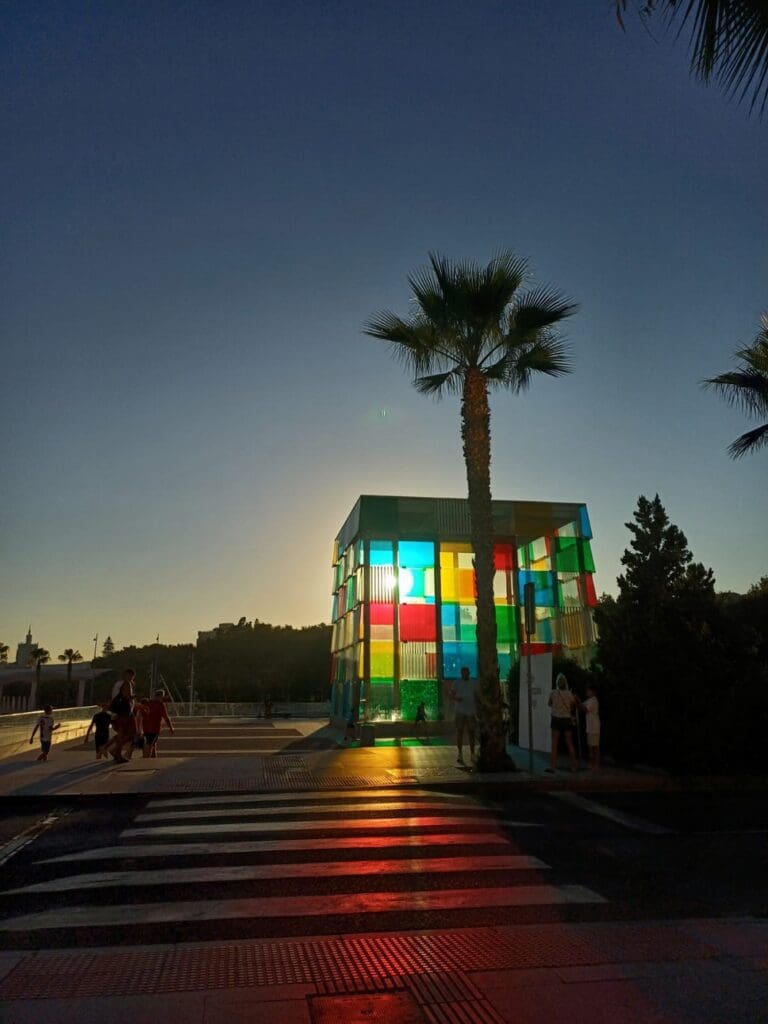
In essence, the Centre Pompidou Malaga, with its rich collection and proximity to the Vamos Academy, is a must-visit for anyone looking to delve into the world of contemporary art without venturing far.
The Centre Pompidou in Malaga is more than just a repository of art; it’s a living, breathing entity that encapsulates the spirit of contemporary art in the modern age. As Malaga continues to evolve and grow, institutions like the Centre Pompidou serve as a reminder of the city’s dedication to preserving and promoting art. Whether you’re an art aficionado or a casual visitor, the museum promises a transformative experience, leaving an indelible mark on your soul.


